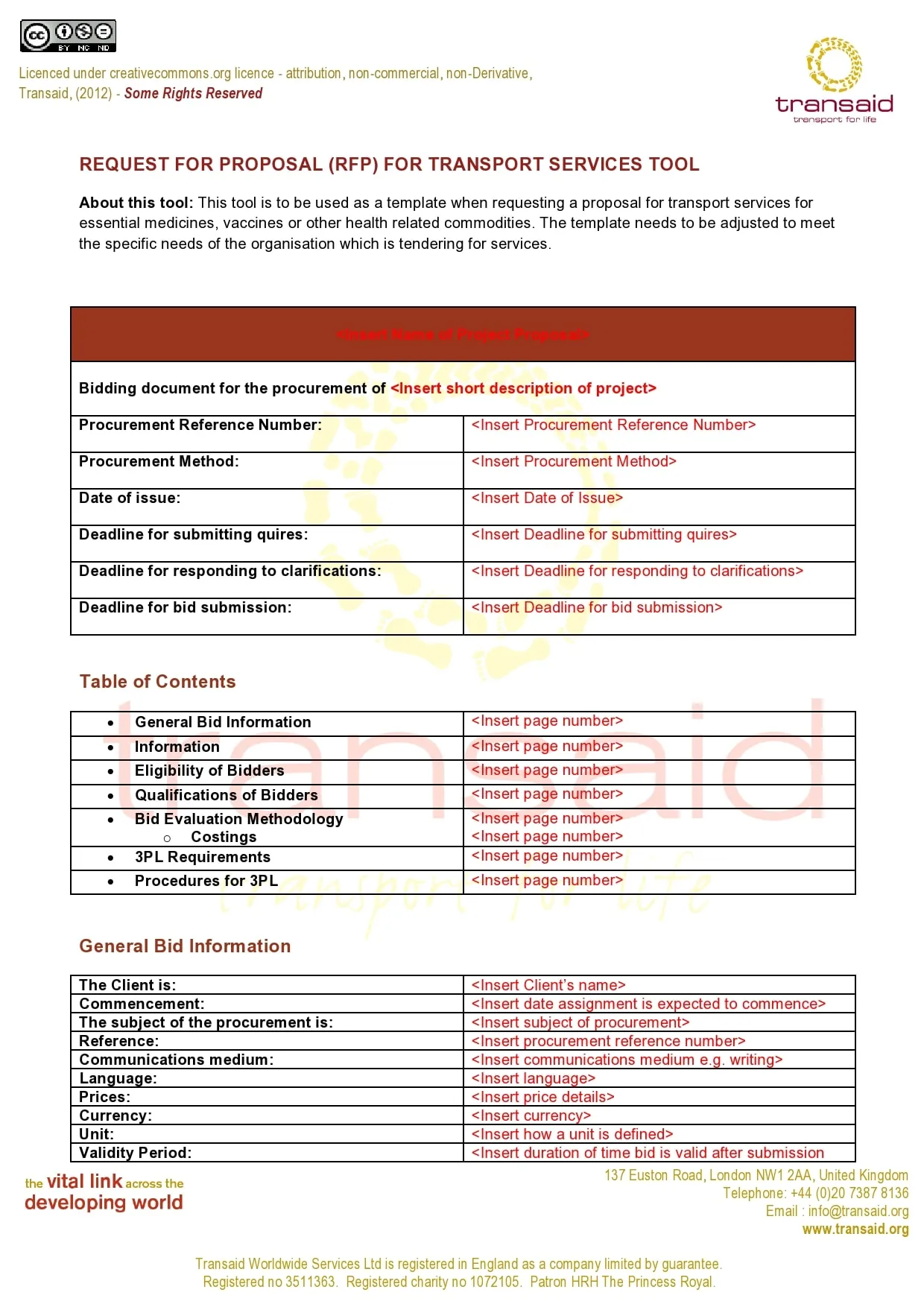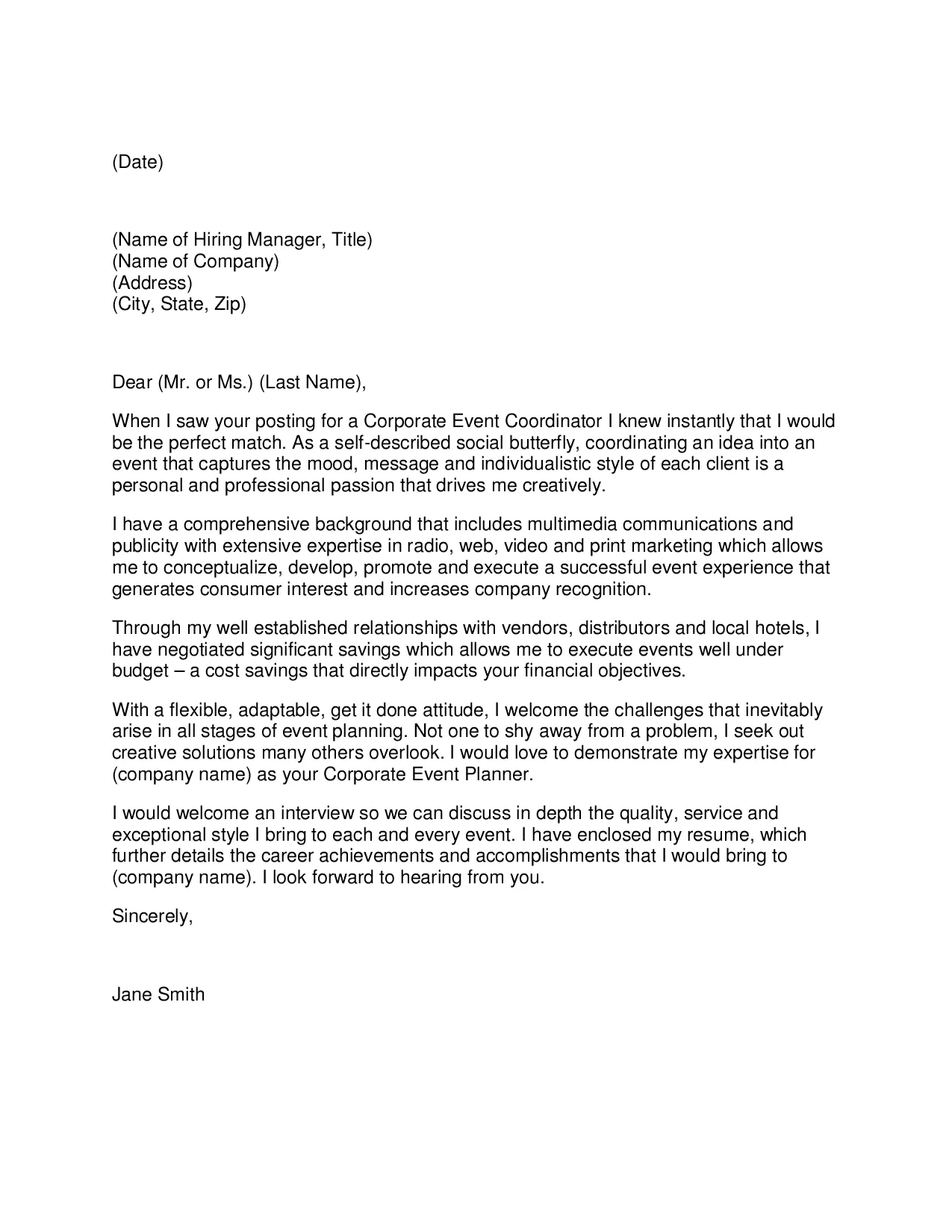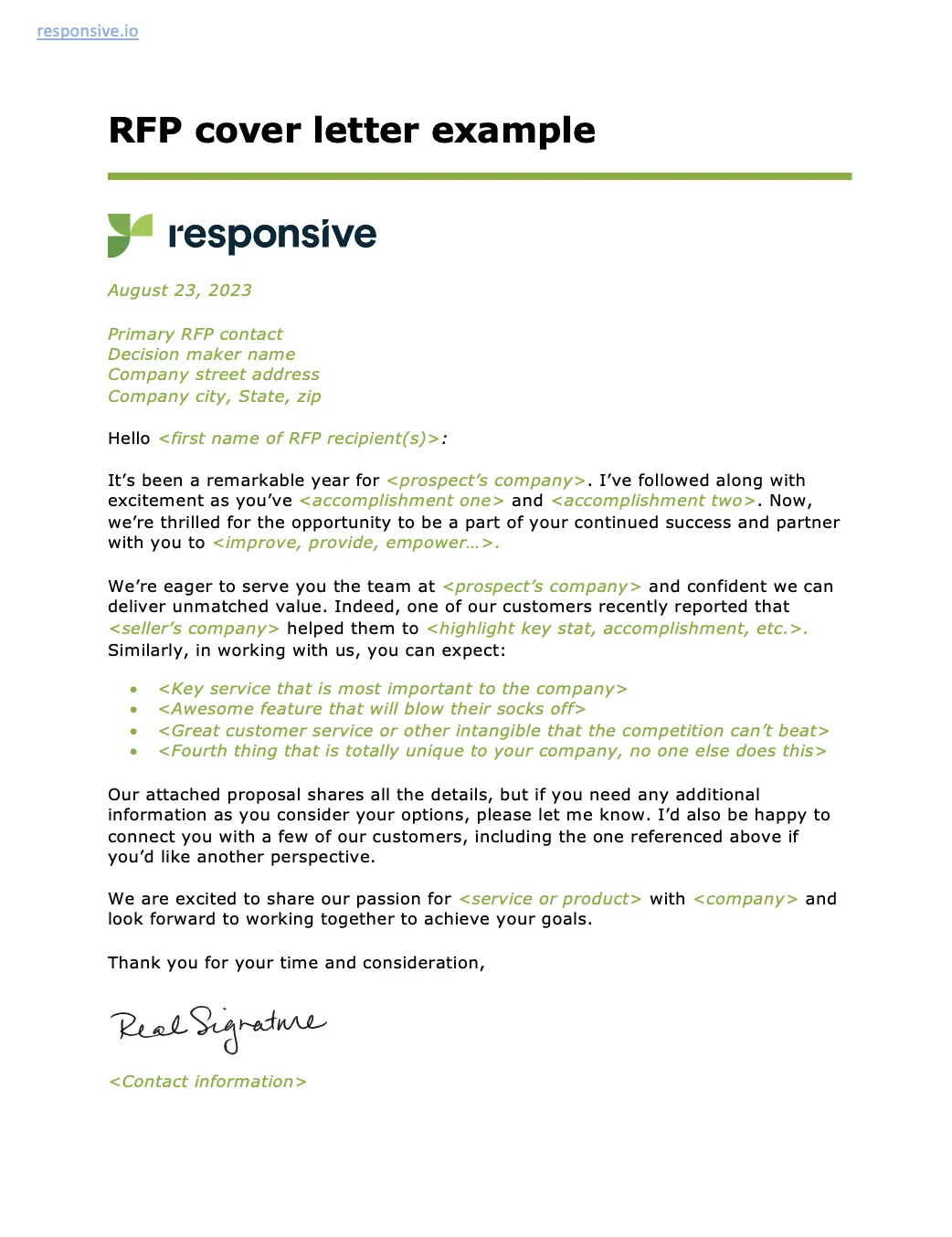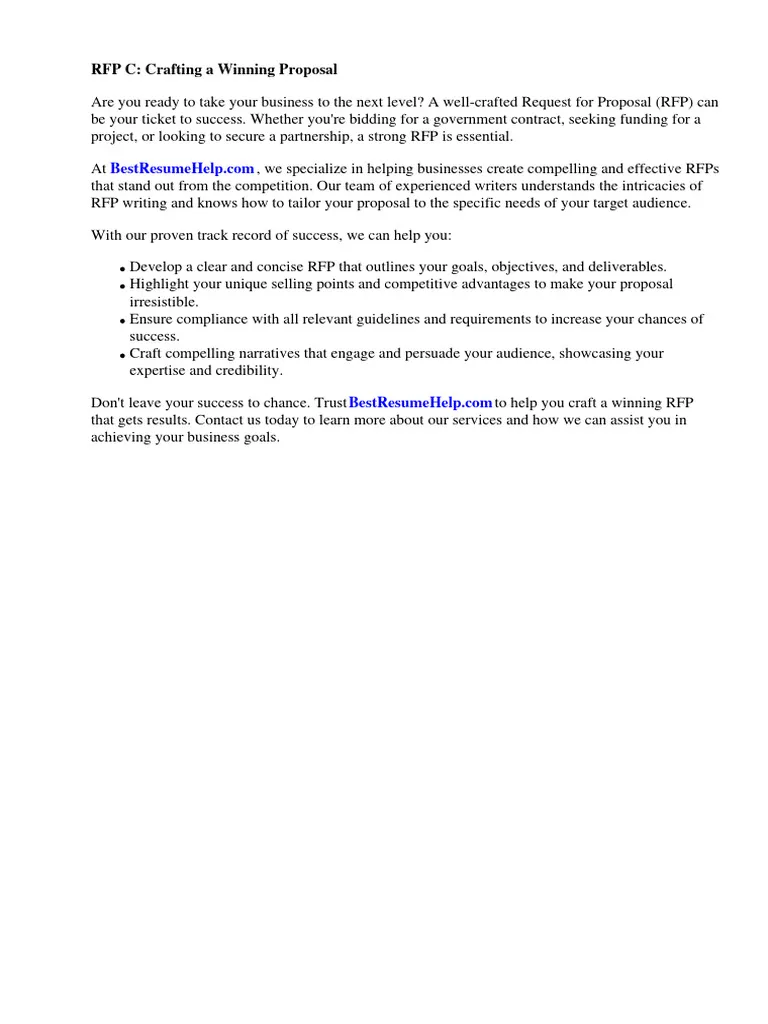What is an RFP Cover Letter?
An RFP (Request for Proposal) cover letter is a crucial document that accompanies your formal proposal to a prospective client or organization. It serves as your first impression and a concise summary of your company’s capabilities, understanding of the project, and why you are the best fit to fulfill the requirements outlined in the RFP. This letter is not just a formality; it is a critical opportunity to set the tone for your proposal and convince the recipient to delve deeper into your submission. Think of it as your sales pitch in written form, designed to capture the attention of the evaluators and persuade them to choose your company. A well-crafted cover letter can significantly increase your chances of success, making it essential to invest time and effort in its creation.
Why a Great RFP Cover Letter Matters
The importance of a great RFP cover letter cannot be overstated. It goes beyond simply introducing your proposal; it provides context, establishes credibility, and demonstrates your understanding of the client’s needs. A compelling cover letter can differentiate your proposal from the competition, particularly in a crowded field. It is your chance to highlight your unique selling points and explain how your company’s specific strengths align with the client’s objectives. Furthermore, it offers an opportunity to build rapport with the potential client, showing them that you are not just another bidder but a partner who is genuinely interested in their success. A well-written cover letter signals professionalism, attention to detail, and a commitment to excellence, all of which are highly valued in the selection process. The ability to succinctly convey your value in a concise manner is also important.
Key Elements to Include

A successful RFP cover letter incorporates several key elements that collectively enhance its impact. First and foremost, it should express genuine interest in the project and acknowledge receipt of the RFP. Clearly state the project or service you are proposing, demonstrating you understand what is required. Secondly, the letter should include a brief but compelling introduction of your company, highlighting your core competencies and relevant experience. Emphasize your understanding of the client’s needs, demonstrating that you’ve carefully reviewed the RFP and comprehend the specific requirements. Include your value proposition, showcasing what makes your company the best choice. Finally, a clear call to action, such as requesting a meeting or follow-up, and your contact information is essential.
Your Company’s Introduction
Introduce your company briefly, focusing on the most relevant aspects. Start with your company’s name and a brief overview of your business. Highlight your core competencies and what your company does best. Then, mention a few significant achievements or awards that validate your expertise. If applicable, mention your company’s mission and values to illustrate your company culture, and show the company is a good fit. This will help build trust. The introduction should set the stage, piquing the reader’s interest and providing a glimpse into your company’s qualifications. Remember, it’s your first chance to make a strong impression, so make it count. Aim for concise, engaging, and focused information that shows your best side, without getting bogged down in excessive detail.
Highlighting Your Understanding of the RFP
Demonstrating that you have carefully reviewed and understood the RFP is critical. This shows your commitment to the project. Start by referencing the specific project or service in the RFP. Then, address the key requirements. Briefly outline how your proposal addresses these requirements, and highlight your understanding of the challenges. Use the RFP’s language to show you understand the scope. This attention to detail confirms that you have taken the time to consider the project’s needs, which separates you from other vendors who may have simply sent out a generic cover letter. By showcasing your understanding, you build credibility and reassure the potential client that you are equipped to deliver a successful outcome. Furthermore, it increases your chances of getting selected for the project.
Showcasing Relevant Experience and Qualifications

Highlight relevant experience and qualifications to establish your credibility. Mention your company’s past projects and success. Provide quantifiable results, such as percentage improvements or cost savings. Highlight expertise that directly relates to the needs of the RFP. Showcase any certifications or awards that are relevant to the project. Your goal is to convince the potential client that your company has a proven track record and the necessary capabilities to deliver the desired results. Back up your claims with concrete examples to make your qualifications more compelling. Consider including case studies or testimonials to further strengthen your argument. Ensure your qualifications directly address the requirements outlined in the RFP. This can improve the chances of your proposal being accepted.
Demonstrating Value Proposition
Your value proposition should clearly state what makes you the best choice. Explain the unique advantages that your company brings to the project. Show how your services will help the client achieve its goals. Focus on tangible benefits such as cost savings, improved efficiency, or enhanced quality. Differentiate your company from competitors by highlighting your specific strengths and advantages. Make it clear what sets you apart and what makes your proposal special. Focus on what you can do for the client to achieve the best results. Be specific and avoid generic statements. Your value proposition is your sales pitch, so make it compelling and memorable. Consider offering a guarantee or a promise to make your proposal more attractive. This is your chance to make the potential client see the value in choosing your company.
Call to Action and Contact Information
Include a clear call to action to move the potential client forward. Tell them what you want them to do next, such as requesting a meeting. Reiterate your contact information, including your name, title, phone number, and email. Thank the reader for considering your proposal and express your enthusiasm. This shows that you’re ready to move forward. Make it easy for them to contact you. The call to action should be concise, specific, and aligned with the next step in the proposal process. Include a deadline, if appropriate, to create a sense of urgency. Always make sure your contact information is accurate and up-to-date. This last element closes your letter and signals your readiness to start the project.
Formatting and Presentation Tips

Proper formatting and presentation greatly improve your cover letter’s impact. Use professional fonts and layouts to make your letter appealing. Keep the letter concise and easy to read. Use headings and bullet points to break up text. Proofread carefully to eliminate errors. Pay attention to margins and spacing. Make sure your letter has a good balance. The letter should be no more than one or two pages long. Use a consistent tone throughout the document to avoid confusing the reader. The goal is to create a document that is professional. Ensure your cover letter is visually appealing. Make sure that it reflects your company’s brand and image. Also, check for any formatting that might have been altered during the conversion to PDF format.
Proofreading and Editing for Perfection
Proofreading and editing are essential steps. Check for grammatical errors, typos, and formatting inconsistencies. Ask a colleague or friend to review the letter for clarity and accuracy. Ensure that the tone of the letter aligns with your company’s brand. Verify that the content is consistent with the proposal. Proofread multiple times to catch any errors that might have been missed. A well-edited cover letter reflects professionalism and attention to detail. Mistakes can undermine your credibility. Make sure that the message is easy to understand. Do not let careless errors diminish your chance to stand out.
